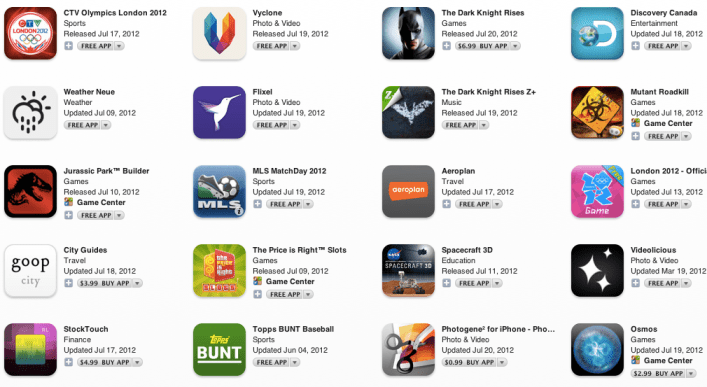
The ecosystem is still healthy, with 650,000 apps in the app store, 225,000 of which are optimized for iPad, but the $100 million decrease in revenue is somewhat astonishing.
[aditude-amp id="flyingcarpet" targeting='{"env":"staging","page_type":"article","post_id":496576,"post_type":"story","post_chan":"none","tags":null,"ai":false,"category":"none","all_categories":"business,cloud,mobile,","session":"B"}']Lower iPhone sales are understandable: Consumers are waiting for the iPhone5.
But any new iPhones and iPads — and in fact any new Mac sales — should be additive to app store sales. So, building on a base of $1.9 billion in sales from the previous quarter, 26 million more iPhones and 17 million new iPads should have increased sales of songs, apps, and in-app purchases.
AI Weekly
The must-read newsletter for AI and Big Data industry written by Khari Johnson, Kyle Wiggers, and Seth Colaner.
Included with VentureBeat Insider and VentureBeat VIP memberships.
Seasonality should not have impacted sales; we’re not talking about a comparison to a Christmas quarter in which consumers might be downloading more apps than usual.
Oppenheimer did say that payments to developers topped $5.5 billion and that app stores were added in several new territories, including Hong Kong and Singapore.
The 650,000 apps is up from 600,000 apps that Apple announced last quarter, and the $5.5 billion paid to developers is up from the $4 billion announced last quarter.
Image credit: John Koetsier/iTunes
VentureBeat's mission is to be a digital town square for technical decision-makers to gain knowledge about transformative enterprise technology and transact. Learn More